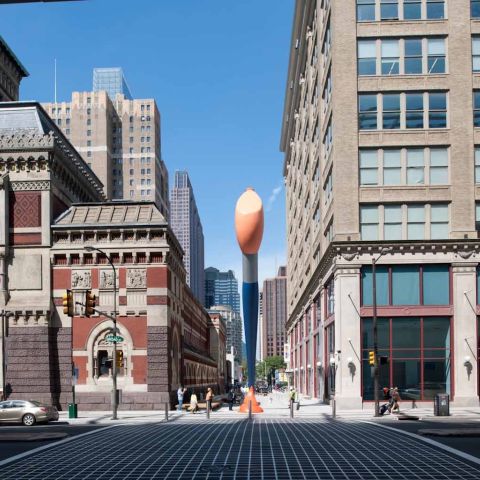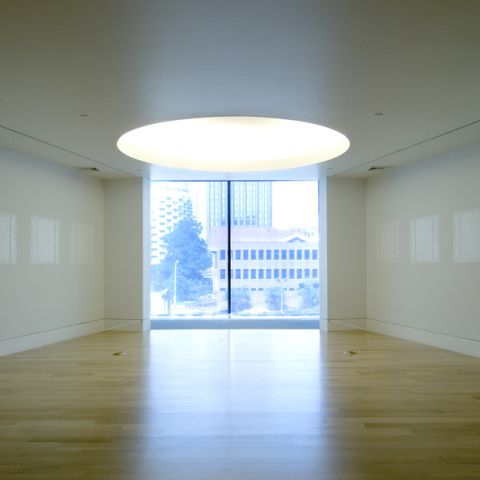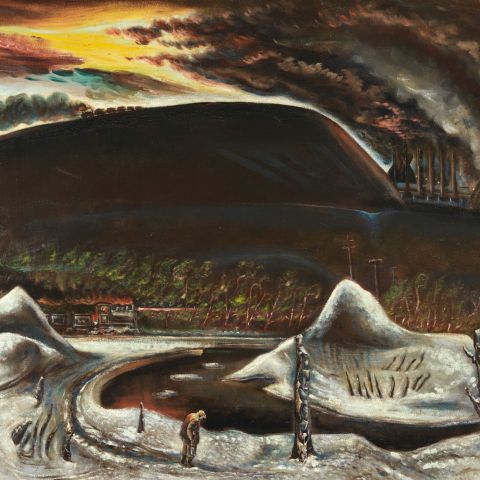Peter Saul: A Retrospective
Peter Saul has challenged viewers and the art world with his hilarious yet transgressive figure paintings. Unafraid to tackle difficult political subjects or examine both the individual or national psyche, Saul is one of the most influential and divisive artists of his generation. Organized by the Orange County Museum of Art, Peter Saul: A Retrospective was the first major American survey of Saul’s work, featuring 50 paintings and drawings from 1958 to 2008, including large-scale “historical epics,” satires of art history, and several of Saul’s recent paintings addressing World War II and the war in Iraq. The PAFA presentation included material not shown at other venues, borrowed directly from the artist, including several working sketches and Clemunteena Gweenburg (1971) from his scathing series of Art World Portraits. Saul also debuted a painting, currently in progress, inspired by Thomas Eakins’s Portrait of Dr. Gross (The Gross Clinic).
Peter Saul (American, b. 1934) is among the handful of American painters and collage artists whose groundbreaking proto-Pop achievements in the late 1950s and early 1960s were demoted once the champions of that movement were anointed a few years later. Saul has always forged his own path, creating often difficult, funny, and trenchant works—“sick jokes” according to Robert Storr, distinguished curator and dean of the Yale School of Art. His art embraces personal foibles and important events in American history, such as the Vietnam War and the Civil Rights movement. His twisted comic-book forms, artificially hot colors, controversial subject matter, and unquenchable ambition to provoke strong feelings through his paintings have kept him on the edges of the art world while also preserving, for over forty years, the freshness of his work.
Sponsors
Contributing support is provided by Harold and Ann Sorgenti as well as The Nakashima Foundation for Peace and George Nakashima, Woodworker. Additional support is provided by Jules and Connie Kay.


